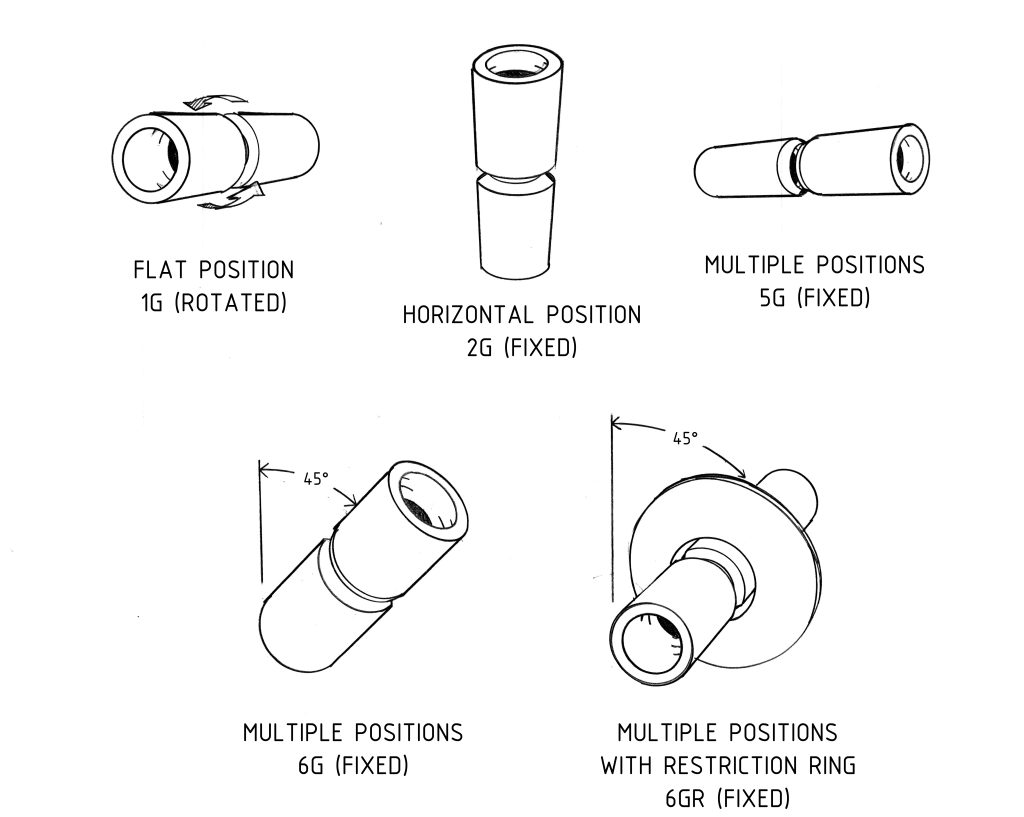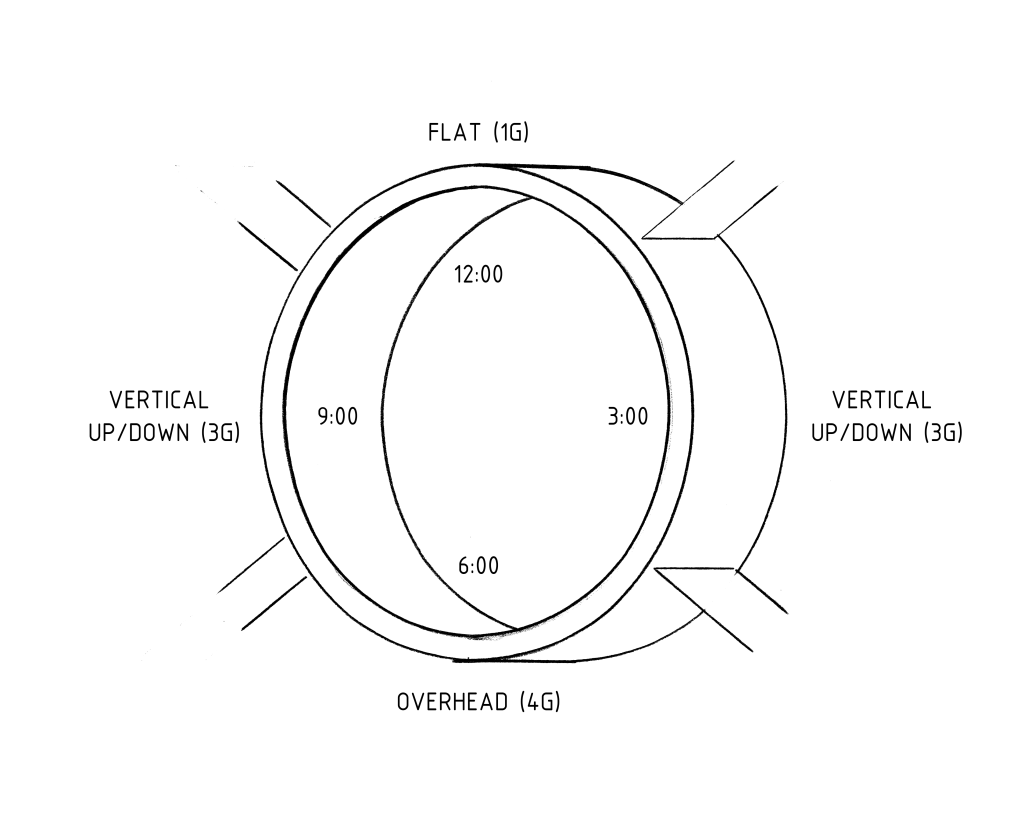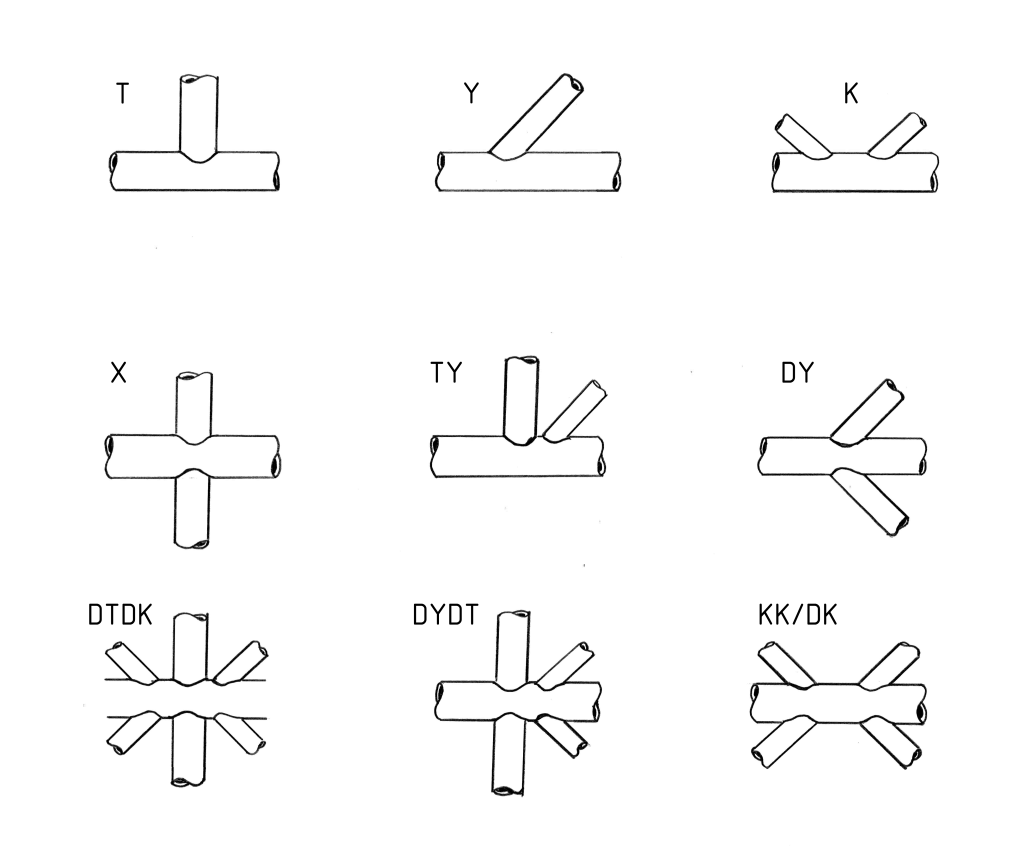10 Pipe Welding Positions
Each welding position has a number designation, and each weld type has a letter designation: “F” for fillet weld or “G” for groove weld. These alphanumeric designations are used on drawings, prints, and welding procedure specifications (WPSs) to specify welding positions. They are also used to designate welding test positions for welding procedure qualification and welding qualification.
Fillet Weld Positions
Fillet welds are typically used to weld pipe to plate or to weld socket joints. Fillet welds have six designations:

- 1F (flat position, rotated): the assembly is positioned at approximately 45º and rotated.
- 2F (horizontal, fixed): the pipe axis is vertical, and the joint is in the horizontal fixed position.
- 2FR (horizontal, rotated): the pipe axis is horizontal, and the assembly is rotated as welding progresses.
- 4F (overhead, fixed): the pipe axis is vertical, and the joint is in the overhead position.
- 5F (multiple, fixed): the pipe axis is horizontal, and welding is done in the overhead, vertical, and flat positions.
- 6F (multiple, fixed): the pipe axis is approximately 45º and welding is done in the overhead, horizontal, and flat positions.
Groove Weld Positions
 Groove welding is most commonly used for joining pipe. Welding power source settings and electrode manipulation vary with the welding position. The standard pipe positions for groove welding are 1G, 2G, 5G, and 6G. There is also a 6GR position that is used strictly for welder qualification purposes. It is similar to the 6G position but also involves a restriction ring that makes the weld more challenging by restricting access to the joint.
Groove welding is most commonly used for joining pipe. Welding power source settings and electrode manipulation vary with the welding position. The standard pipe positions for groove welding are 1G, 2G, 5G, and 6G. There is also a 6GR position that is used strictly for welder qualification purposes. It is similar to the 6G position but also involves a restriction ring that makes the weld more challenging by restricting access to the joint.
Roll Welding
Roll welding refers to welding performed in the 1G position. The pipe itself is rotated so all welding is performed at or near the top of the pipe in the flat position. Roll welding is commonly performed with GMAW or FCAW. In applications where pipe can be rotated, roll welding reduces welding time and improves overall weld quality because it eliminates the need to weld out of position.
Position Welding
Position welding refers to welding performed in the flat, vertical, and overhead positions. The pipe itself is fixed in place and not rotated.
Position welding is more challenging than roll welding because position welding requires the welder to adjust electrode angles and apply different welding techniques while welding around pipe.
Other Weld Positions
 Other welding joints include Y, T and K connections. These joints are typically fillet welds but can also be groove welds. These joints are commonly used to create offshoots from the main pipeline.
Other welding joints include Y, T and K connections. These joints are typically fillet welds but can also be groove welds. These joints are commonly used to create offshoots from the main pipeline.

